The founder of 3D printing studio - about his work
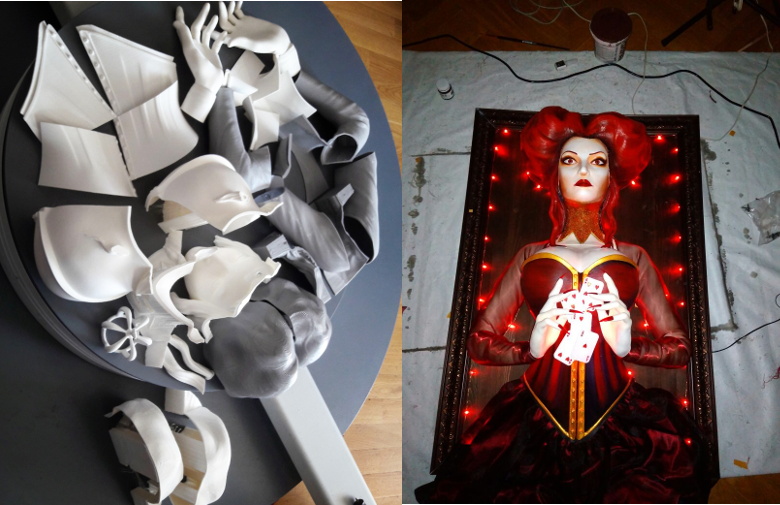
Red Queen, printed in 3D-EX. Details under the cut
The market of equipment and software for 3D printing will reach $ 17-20 billion by 2020 - such figures are given by industry analyst Wohlers Associates Inc. But taking a place in this growing industry is not so simple: universities are not yet graduating specialists in 3D-modeling and printing print management. There is only one way left - self-education. And those who are ready to go on it, we invite to master classes in 3D printing. Participants will work with modern printers and scanners, familiarize themselves with the Polygon X program and print three-dimensional plastic figures.
The master of the master class will be Artem Rodin, director of 3D-EX studio and an experienced teacher. We talked with Artem about what awaits the participants of the master classes, as well as about how modern 3D printing studios live and what orders they are proud of.

Artem Rodin began his journey to 3D printing with modeling. He was fond of them for several years, when the company PICASO 3D turned to him and asked to help with the creation of models. The collaboration turned out to be fruitful, and after a while, Artyom bought the first printer at a discount from the company. Later, Artem came to the idea of creating his own studio. He now runs the 3D-EX print studio. Also under his leadership is the Laboratory of Additive Technologies of the First Moscow Educational Complex (1st IOC), where children and adolescents learn the skills of 3D printing.
One day in the life of a 3D printing studio
3D-EX opened three years ago. The first order came from Yakutsk: it was necessary to print a miniature sculpture and, most difficultly, deliver it to the customer the next day. They agreed largely because they did not want to miss the first client.
')
To fulfill the requirement, the figure had to be sent with fellow travelers by passenger plane: not a single courier company undertook to deliver it during such a period.
“While driving to the airport, I searched the Internet for what the Yakuts look like. Once a hundred lost in the head conversation. An hour and a half walked around the waiting room, pestered everyone. Three refused: what if it is any drugs. Found a family - a mother and a young man, they eventually agreed. "Now 3D-EX already has a base of regular customers, so a typical working day looks almost the same as in any small business.
Employees arrive at 9am. They check the printers, remove the finished products: often the machines work all night. At about 10 am a new batch of print starts. And the previous one is sent for gluing, sanding and painting.
They work with clients during the day: they collect orders, issue ready orders or send them by courier. By 18-19 o'clock, when all orders are shipped, and printers are loaded with work for the night, the team goes home. But this is not always the case.
“It happens that we come to the workshop at 6 in the morning and leave at 12 at night. Customers often do not fully understand what 3D printing is. They say: "I have money, I need to do everything until tomorrow." And the complexity of the order is such that it takes a week to complete it. Therefore, I have already spent the night in the office three times, followed the printers to meet the deadline. ”Often come to the aid of colleagues. In Moscow, there is a community of 3D printers (“friends of friends”), and its members work together to complete large orders or transfer work to each other for an agent's percentage. Studios have different technical capabilities and specialization, therefore sometimes it is more profitable to give the order to colleagues.
Sometimes the bill goes to thousands of identical parts, which also "need to be done yesterday."
“Once I had to urgently print 6 thousand small openwork buttons for the production of clothing. Print took a week; It turned out four bags. I remember how we sat, counted the buttons and packed them in 500 pieces. ”So that the studio could confidently declare itself on the market, in it, according to Artem, there must be at least six printers: five for plastic and one for photopolymer. There are about 20 printers in 3D-EX; monthly income - 30 thousand from one printer for plastic and 60 from one photopolymer (come to photopolymer orders less often, but they are more in volume and cost). Orders for 3D-scanning come in the amount of 1-2 per month, so it is easier to borrow a scanner from business partners than to purchase.
Most orders coming to the studio are technical details. These are cases, latches, gears, parts of mechanisms. But among them there are 5-10% of those that require a non-standard approach and are remembered for a long time.
Here are a few orders that Artem recalls with pride:
(these are the orders about which Artyom has the right to say: "There are more complex and secret ones. For example, we have repeatedly collaborated with special services and sent printed parts to space")
1. The Red Queen
The Queen's figure from “Alice in Wonderland”, which decorated the Moscow bar “Gigue-Dryga”, was printed in pieces for a whole week. Then the parts were assembled together, strengthened the design from the inside and painted in base white. A large team participated in the project: the model was created by freelance designers, and the designers of the bar did painting and refining.

2. The statue "Eye of the Void"
Silver mermaid height of 1.2 meters - an enlarged model of the sculpture of the Moscow artist. Original scanned; the model was divided into parts and sent to print. The statue took 8 kg of plastic and several weeks of work. The most difficult thing was to assemble and disguise the seams. Four days of crawling on the floor for processing parts - and that's it. As a result, the customer accepted the job, and "The Eye of the Void" went on a world tour.
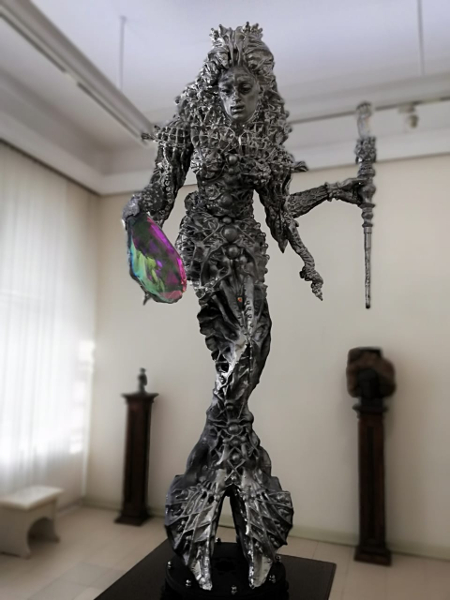
3. Greetings from Fallout
Once the studios ordered a copy of a laser weapon from the Fallout game based on a pneumatic airsoft gun: props were needed for a war game. On the Internet, there were models of both a prototype pistol and laser weapons from a cult shooter. All it took was to print the lining parts (it took 30 hours), attach them to the base and paint them.

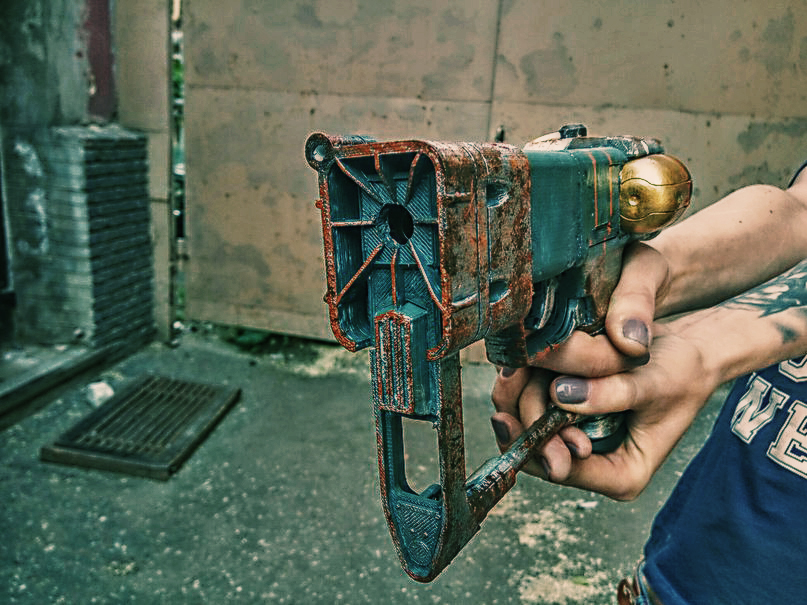
4. Tractor
For the robot platform, the body was required: tractor body. To print it, we created a 3D model (based on the ready-made model of the platform), and then a scan for printing, which was also made in parts. But the most difficult was the stage of grinding and painting: as it turned out, PLA plastic does not take the skin very well, it heats up and “leads” it. Primer and paint, too, turned out to be capricious. But in the end, the robotic tractor stood firmly on its wheels. Everything was done in a record 14 days.
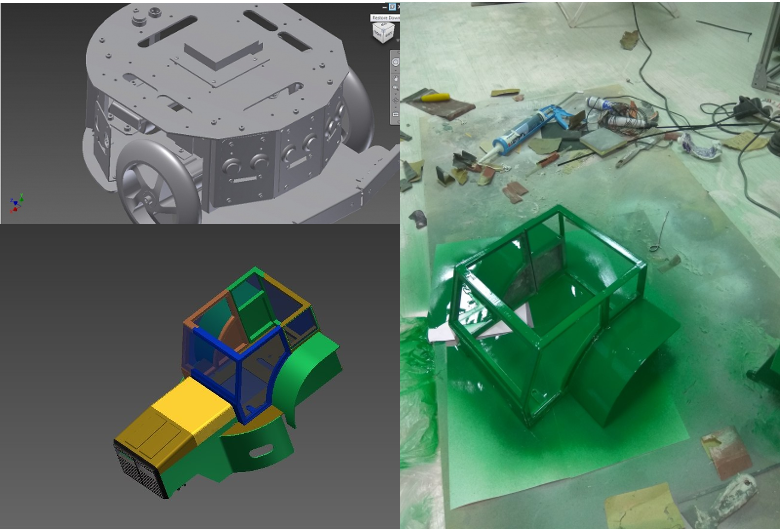

5. Platform for electric cart
The cart for high-speed electric train was printed on the model of ten-year-old Sergei Chaynikov. The schoolboy, who perfectly mastered the skill of 3D modeling, created a prototype of transport for the 3D BOOM competition. For printing, the PICASO 3D Designer PRO 250 printer was used with the possibility of creating washable supporting structures: the shape of the cart turned out to be very complex. Sergey's project was recognized by the jury as the best.
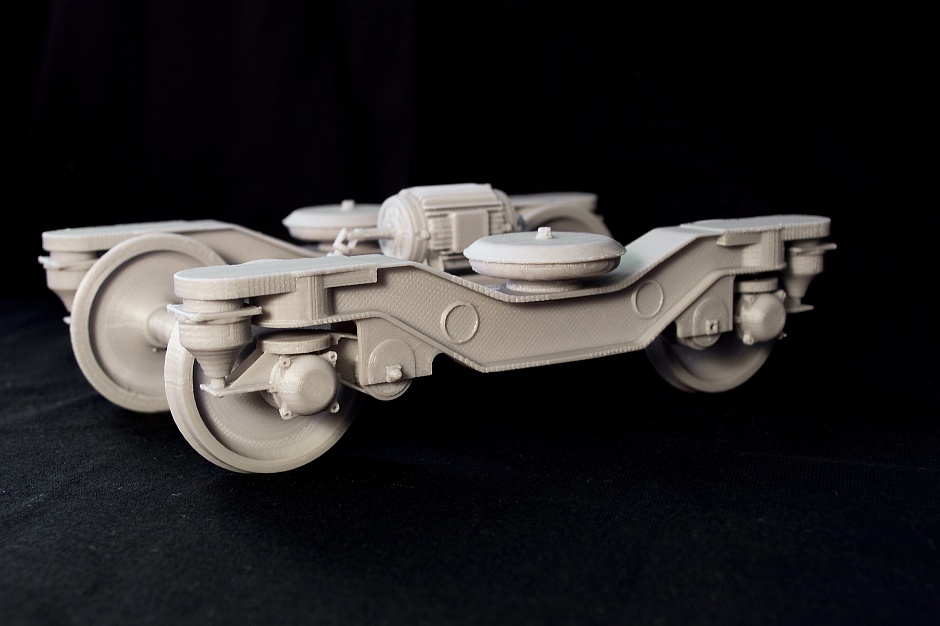

Workshops at 3D Print Expo
Artyom maintains partnerships with PICASO 3D: at industry exhibitions they stand on the same stand, and Artyom conducts master classes on behalf of the company. At the 3D Print Expo, he will also conduct master classes on PICASO 3D equipment.
Master classes will be held on both days of the exhibition, October 12 and 13. They will be divided into two blocks: for beginners (3 hours) and for experienced users (4 hours).
“The initial course is designed for people who have not tried to create models themselves and work with a 3D printer. It will start both days at 10 o'clock. The program is the same, so you can sign up for any convenient day. We will get a basic knowledge of 3D printing: we will understand what it is and why we need it; who are the customers and what are their needs; how profitable it is. The participants of the master classes will get acquainted with the equipment, programs and will be able to print the product themselves on the finished model.Each master class participant will have a laptop, scanner and Designer X PRO 3D printer. This printer has two nozzles, which makes it possible to print two materials of different composition and color. Thanks to JetSwitch's patented technology, the inactive nozzle leaves no residue on the product. Designer X PRO can also create water-soluble support, which is convenient when printing complex models.
The advanced course is designed for those who already have experience in creating models and, possibly, printing. It will also go two days with the same program; start at 14 o'clock. We take a closer look at pricing in 3D printing and touch on the business a bit: how to start, where to look for customers? And most importantly, let's look at the features of working with Designer X PRO, the capabilities and settings of a 3D printer; Polygon X software, its benefits and new features. Participants will model their own objects in the program and print them on a 3D printer. ”
To become a member of the master class, register on the event website . The ticket can be bought on the day of the event, but its value will increase. The ticket price includes visiting the exhibition.
3D Print Expo is a large-scale exhibition of additive technologies. On October 12, a lecture hall will be held within its framework, and on October 13, a prize draw, among which is the Vortex Dual 3D printer .
Source: https://habr.com/ru/post/423867/
All Articles